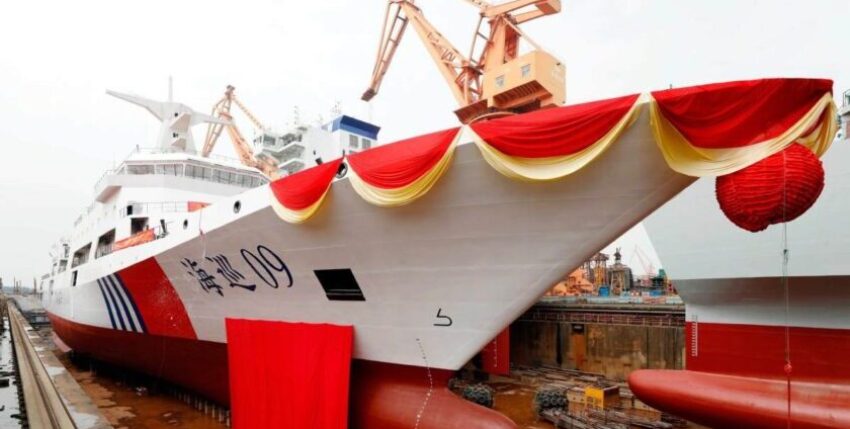China's second navy becomes seaworthy
At the beginning of 2013, China decided to merge four of the five different maritime law enforcement agencies into the China Coast Guard (CCG, long title: Chinese People's Armed Police Force Coast Guard Corps (PAPCGC)). With almost 1,400 units, China has an almost unmanageable fleet of white-painted ships and boats - the world's largest coast guard in terms of vehicles and personnel - for customs tasks, fisheries protection and piracy defence, but above all for enforcing sovereignty claims. And since January 2021, a new coastguard law has been in force that allows the CCG to use lethal force against foreign vessels that do not comply with requests to leave Chinese waters.
Shipping supervision
The Maritime Safety Administration (MSA), with its almost equally labelled units but complementary areas of responsibility, was excluded from the restructuring. As China's maritime police authority, it is responsible for monitoring the navigational safety of shipping, including training and licences, as well as occupational safety and environmental protection on board and at sea. It is also responsible for navigational aids (buoyage/beaconing) and SAR equipment. In total, there are probably more than 1,300 boats, most of which are small and very small, operating primarily in coastal waters and rivers. Only 200 of them are larger than 20 metres, and only a handful of them are over 1,000 tonnes in size and therefore seaworthy.
Haixun 09 - seaworthy
At over 10,000 tonnes (165 metres, 25 knots), the largest of them has just been commissioned in Guangzhou City and "christened" Haixun 09, because all MSA ships are named Haixun (sea cruiser) and can only be defined by numbering. Haixun 09 can now fulfil all the above-mentioned tasks on the high seas and with an autonomy of 3 months over a longer period of time. The guard ship is to be stationed in the Guangzhou district - with a view over Hong Kong and the South China Sea! And according to the Chinese interpretation, the international shipping lanes that run through there are, after all, in territorial waters.
China's third navy, the maritime militia
Incidentally, the Coast Guard does not include several hundred mostly civilian-owned fishing vessels and boats, which are part of the state-sponsored militia forces (Peoples Armed Forces Maritime Militia) and whose crews are considered soldiers in uniform, but who are innocent fishermen in civilian clothes. The units are mostly organised militarily (squadrons), they are often unmarked and unclassified if they are militiamen on the side. However, they are also clearly identifiable vessels if they are organised as militia on a full-time basis, i.e. designed as fishermen, but are not manned for fishing with an average of 12 men. They cooperate intensively with the CCG and the Chinese navy and are China's asymmetric tool for the grey area between peace and armed conflict. Their task is to "stand in the way" of other states and their vessels, to prevent them from pursuing their interests, and quite simply to "occupy" sea areas - to show presence at anchor and to document claims without the use of force. In this unconventional way, based on numerical superiority, China is attempting to assert its illegal sovereignty claims, primarily in the South China Sea, against the Philippines, Malaysia, Vietnam and Indonesia, but also against Taiwan and Japan. See also the recently published longer analysis "Pulling back the curtain on China's Maritime Militia" by CSIS (Center for Strategic and International Studies, Washington, D.C.), as well as the short video in the QR code.
For further information, see the analysis under https://youtu.be/J-buI5rInxw
or the short video at https://youtu.be/y2Rk1wRCfnc










